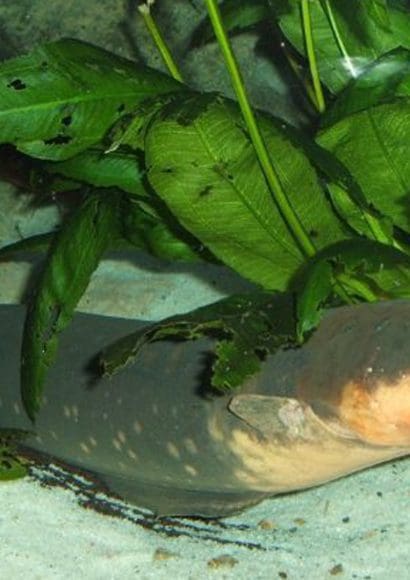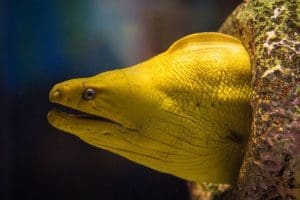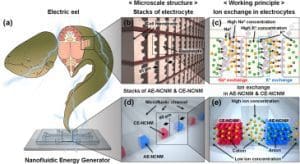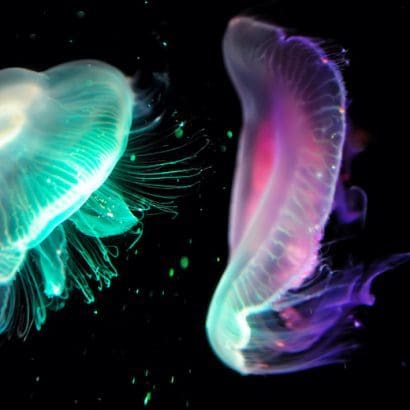
The electric eel, a fascinating creature capable of generating electricity, has captured the curiosity of scientists and nature enthusiasts alike. Its shocking abilities have intrigued humanity for centuries, leading to the question: When was the existence of the electric eel discovered?
Explorers and naturalists venturing into the depths of South America first encountered these enigmatic creatures. Through their accounts, early glimpses into the existence of electric eels began to emerge. However, it wasn’t until the diligent efforts of scientists that the true nature of this remarkable species started to be unveiled.
This article delves into the timeline of the electric eel’s discovery, exploring the significant milestones and contributions made by researchers throughout history. From the initial encounters documented by explorers to the scientific investigations into their electric capabilities, we will trace the steps that ultimately shed light on the existence and unique traits of the electric eel.
Contents
Early discoveries.
During the early explorations of South America, intrepid adventurers and naturalists stumbled upon a remarkable creature that would later be known as the electric eel. These early encounters marked the beginning of our understanding of this extraordinary species and laid the foundation for further scientific investigations.
The accounts of explorers and naturalists provided the first glimpses into the existence of electric eels. Their descriptions often revolved around the electrifying shocks they received when handling or interacting with these mysterious creatures. These early encounters sparked curiosity and intrigue, prompting scientists to delve deeper into the nature of electric eels.
One of the notable early discoveries was made by the renowned explorer and naturalist Alexander von Humboldt during his expeditions in the early 19th century. Humboldt encountered electric eels in the rivers of South America and meticulously documented their behavior, electric shocks, and physical characteristics.
The observations made by Humboldt.
The observations made by Humboldt and other early explorers laid the groundwork for further scientific inquiry. They helped scientists recognize that the electric eel was not merely a legend or a fantastical tale but a real creature with exceptional electrical capabilities.
While these early discoveries piqued interest and set the stage for future research, it would take the dedicated efforts of scientists in the following years to unravel the mysteries surrounding the electric eel. Through careful experimentation and anatomical investigations, researchers would uncover the fascinating mechanisms that allow electric eels to generate electricity.
The study of animal electricity.
The phenomenon of electricity in the animal kingdom has long fascinated scientists, leading to the emergence of a specialized field of research known as the study of animal electricity. This field encompasses the exploration of how various animals generate, manipulate, and utilize electrical signals for communication, defense, and other physiological processes.
The study of animal electricity dates back centuries, with notable contributions made by pioneers such as Luigi Galvani and Alessandro Volta. Galvani’s experiments with frog legs in the 18th century revealed the existence of bioelectricity, demonstrating that animals possessed inherent electrical properties. This groundbreaking work laid the foundation for further investigations into the electrical nature of organisms.
Moreover, the knowledge gained from studying animal electricity has found practical applications in various fields. Researchers have drawn inspiration from the electric organs of fish to develop medical devices such as pacemakers and bioelectrodes. Furthermore, the principles derived from the study of animal electricity have contributed to advancements in bio-inspired robotics and sensor technologies.
If you want to learn more about this fascinating marine species, click here.
The discovery of the electric structure.
The exploration of the electric eel’s unique abilities extended beyond its capacity to generate electricity. Scientists were intrigued by the anatomical and physiological aspects that allowed this remarkable creature to produce such powerful electric discharges. Through meticulous investigations and advancements in scientific techniques, the discovery of the electric structure of the electric eel unfolded.
Researchers conducted in-depth studies to unravel the underlying mechanisms of electric eels’ electric organ, which is responsible for generating electrical signals. They sought to understand how this organ was structured and how it functioned to produce electric discharges. Through dissections, microscopy, and advanced imaging technologies, scientists were able to uncover the intricacies of the electric structure.
One significant finding was the identification of specialized electric cells known as electrocytes within the electric organ. These electrocytes are aligned in a series, forming stacked layers like the cells of a battery. This unique arrangement allows the electric eel to produce a substantial electric charge by coordinating the discharge of these cells.
Scientific advancements and applications.
The exploration of animal electricity, specifically through the study of electric eels, has expanded our knowledge of the natural world. It has provided insights into the evolutionary adaptations and ecological roles of electrically active organisms, deepening our understanding of how animals interact with their environments.
Moreover, the discoveries made in studying electric eels have found practical applications in several areas. In the field of medicine, the principles derived from the electric eel’s electric organs have been utilized to develop bioelectrodes and bioelectric devices. For example, researchers have drawn inspiration from the electric eel’s electrical generation mechanisms to design and improve pacemakers and other implantable medical devices.
The study of electric eels has also contributed to advancements in bio-inspired robotics.
Researchers have utilized the understanding of the electric structure and electrical generation mechanisms to develop robots and prosthetics that mimic the electric eel’s abilities. These bio-inspired technologies hold potential in areas such as underwater exploration, biomimetic sensors, and soft robotics.
Furthermore, the electric eel’s unique electric discharge has implications in the field of defense and security. The study of electric eels’ electrical signals and communication mechanisms can provide insights into developing innovative systems for bio-inspired signal jamming, detection, and communication technologies.




